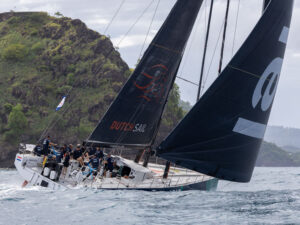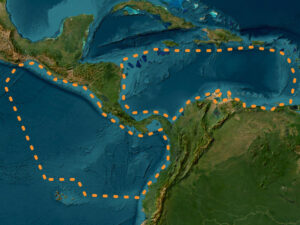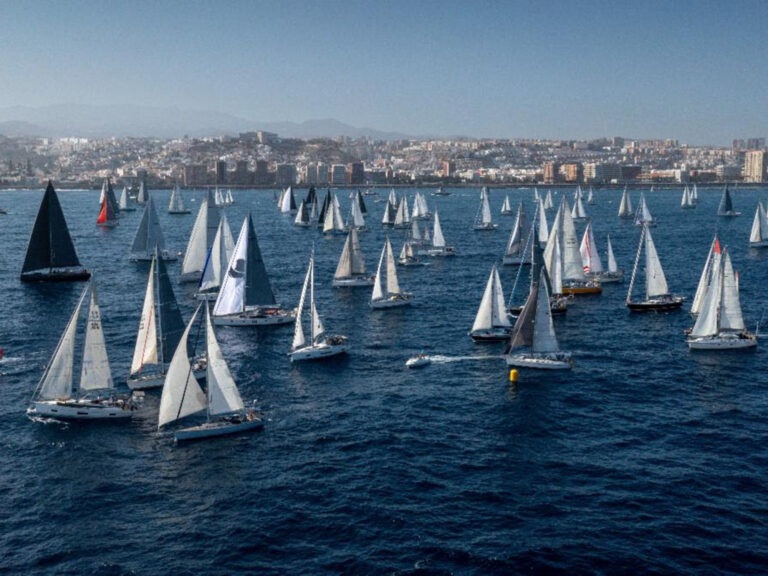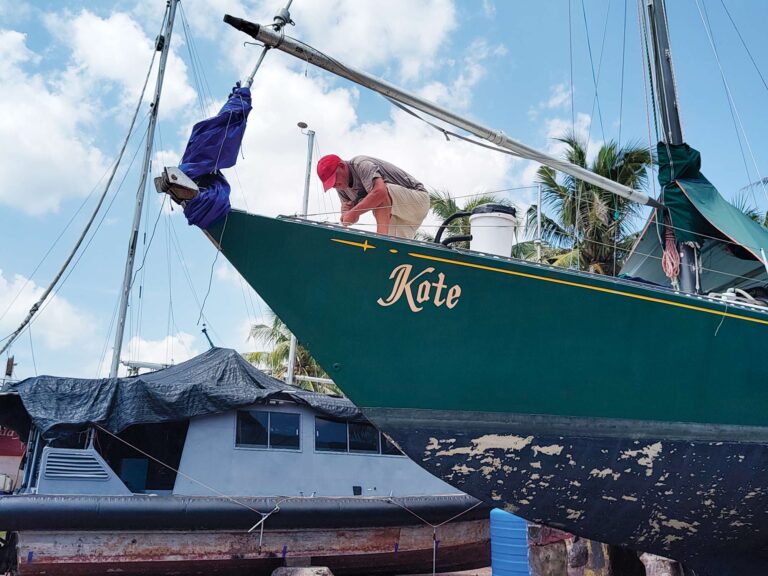
HandlineSt
I like to fish, so whenever I go sailing on the ocean, I take along a handline with a few lucky lures. If the boat owner doesn’t object, I throw out a line.
I have discovered an easy, compact way to store my fishing gear: I use a plastic potato chip canister as a spindle for a 300-foot length of monofilament fishing line (80-pound test works fine, but 300-pound test is easier on the hands). I put each lure in its own ziplock bag, then place the lures inside the canister.
Once you’re ready to fish, tie a snap swivel at each end of the line, and attach a lure to one of the snap swivels. Toss the lure overboard, and pay out line until the lure is about four boatlengths behind. I also adjust based on wavelengths, keeping the lure about four waves back.
One you have the lure where you want it, attach the other snap swivel to something structural on the boat, like a backstay. (If you are towing a dinghy, the fishing line should be on the opposite side of the stern.) Next, make a four-foot loop in the line, attach it to a short length of bungee cord of surgical tubing, and tie the tubing to the boat. This will give the line some elasticity, and help set the hook when you get a strike.
Now, be patient. Don’t get discouraged if you don’t get a strike right away-after all, it’s called fishing, not catching. When you do get a strike, don’t stop sailing. Have one person with gloves handle the line, bringing it in hand over hand, being careful not to wrap the line around their hands. The other person should try to keep the excess line from tangling. If the fish runs for the boat and creates slack in the line, take it up as fast as possible. When the fish gets tired, bring it alongside the boat and, if you have a gaff, use it. Otherwise, use a pair of vise grips to handle the fish and remove the hook.
If you don’t plan on eating the fish, set it free; otherwise, throw it in a cooler. You can also leave the fish in the cockpit, but be careful of its sharp fins and teeth! The most humane way to kill the fish is to soak a cloth in alcohol-rum works-and hold it over the gills. It’s wise to check with the locals before eating any fish, because some species carry ciguatera, which can make you sick. If you caught the fish in deep water, it’s probably okay to eat.
I’ve had the most success catching fish when the boat was sailing at 5 knots or more. The lures that tend to work best are skirts with plastic heads; my favorite is a green, four-inch rattle jet by Bass Pro. I’ve also used deep sea rods and reels while cruising, but the handline method works well for taking up slack quickly. Finally, don’t forget to bring in your line before entering the harbor: even 80-pound test can foul your prop.
Good luck, and happy sailing!
Bob Methven runs TortolaSailing.com








